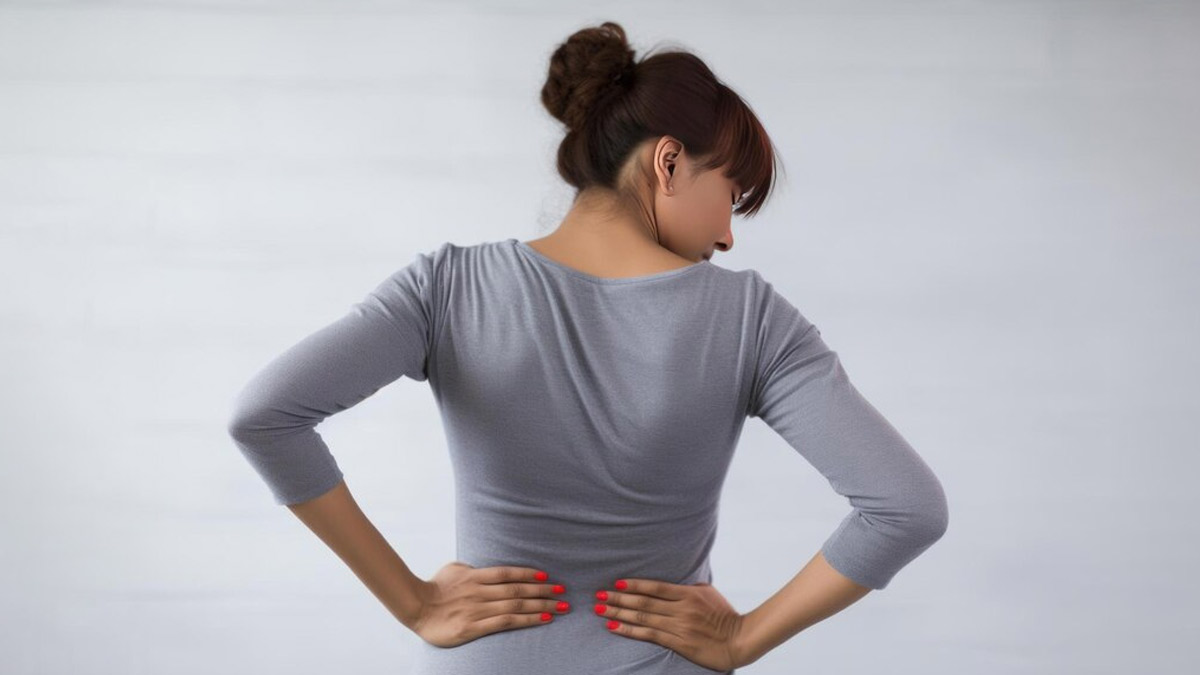
When it comes to pregnancy challenges, they do not stop at childbirth. After giving birth, mothers continue to face various physical, mental, and emotional difficulties. One of them is coccydynia, also known as tailbone pain. The tailbone, also known as the coccyx, is located at the very bottom of your spine and supports your body weight when you're in a seated position. During pregnancy, tailbone pain is common as your abdomen expands, your posture changes, and there is too much pressure on the lower back, particularly the tailbone. However, even after childbirth, mothers may continue to face this problem. We spoke to an expert to understand the same.
Table of Content:-
Also Read: Exercises to Get Rid of Back Pain during Pregnancy
What Causes Tailbone Pain After Childbirth?

Dr N Sapna Lulla, Lead Consultant - Obstetrics and Gynaecology, Aster CMI Hospital, Bengaluru, says, "Tailbone pain, commonly referred to as coccydynia, can be attributed to various factors associated with childbirth. One of the primary causes is the physical trauma that may occur during labour, particularly with prolonged labour or the use of forceps. This can result in inflammation or injuries, leading to considerable discomfort. Furthermore, hormonal changes during pregnancy can cause the ligaments around the tailbone to loosen, making it more susceptible to injury."
Other contributing factors may include the baby's position during birth, which can exert excessive pressure on the coccyx, as well as preexisting conditions that may be aggravated by the physical demands of childbirth.
In general, coccydynia is five times more common in females than in males, according to StatPearls Publishing. The research further suggests that obesity may also be a contributing risk factor.
How To Tell The Difference Between Normal Postpartum Discomfort And Coccydynia

Feeling general discomfort during the postpartum period is normal and sometimes relieves itself on its own. However, it is important to distinguish it from coccydynia.
"While postpartum discomfort can manifest in various ways, including soreness from childbirth, muscle strain, and general fatigue—all of which are common as the body adjusts to the changes following delivery—coccydynia often presents as localised pain that can worsen when sitting for extended periods, standing up, or during certain movements," highlights Dr Lulla.
She adds that it is important for new mothers to understand these differences so they can seek appropriate care and effectively manage their recovery.
Strategies To Reduce Tailbone Pain At Home

There are several effective home remedies and exercises that can provide relief. These include:
- Gentle stretching exercises, such as pelvic tilts and seated forward bends
- Using a cushion or a specially designed tailbone pillow while sitting
- Warm baths with Epsom salts
- Applying ice packs intermittently
- Incorporating gentle yoga poses that focus on the hips and lower back
It is crucial that mothers be cautious while exercising. Moreover, if the pain persists for more than a few weeks, gets worse over time, or is accompanied by other concerning symptoms, such as fever, difficulty sitting, or pain spreading to the legs, consult a doctor.
Also Read: What Are The Causes Of Heartburn During Pregnancy? Know How To Treat It From An Expert
A Final Word
Dr Lulla says, “During pregnancy and labour, it is important to consider various preventive strategies to help minimise the likelihood of developing coccydynia.”
She shares that expectant mothers can benefit from maintaining proper posture while sitting, using supportive cushions, and avoiding prolonged periods of sitting on hard surfaces. Additionally, exercises, like strengthening and stretching, can contribute to better overall pelvic health, the doctor concludes.
Also watch this video
How we keep this article up to date:
We work with experts and keep a close eye on the latest in health and wellness. Whenever there is a new research or helpful information, we update our articles with accurate and useful advice.
Current Version